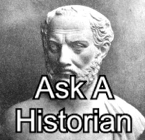|
|
|||||||||
Prehistory | 2 Worlds Meet | New France | England Arrives | Clash of Empires | Revolution | British America | Reform/Revolt | Responsible Government | Confederation | Nation Building | Laurier | The Great War | Roaring 20's | Great Depression | WWII | The Peace | Cold War | Trudeau | PC's in Power | Modern Canada
Constitution Act 1791 | Guy Carleton | Jay's Treaty | Black Loyalists | Alexander Mackenzie | Simon Fraser | David Thompson | John Graves Simcoe | Captain George Vancouver | The Northwest Company | Prevost's Conciliation | Tecumseh | The War of 1812 | Lord Selkirk | Newfoundland
Sir Alexander Mackenzie was one of the greatest explorers in history. He opened up vast tracts of the Canadian wilderness for trade and settlement. He mapped the Mackenzie River all the way to the Arctic Ocean and seas the first man to travel right across Canada and return. While Cook and Vancouver were sailing the seas and touching on the coast, Mackenzie was slogging through the dense rainforests of the West Coast, over the majestic barrier of the Rockies and across the endless grasslands of the Prairies.
Mackenzie's was born on the Isle of Lewis, Scotland in the little town of Stornaway. His journey as an explorer started when his father brought him from Britain to New York City in 1774 where the revolution was starting to gain momentum. His father joined the King's Royal Regiment of New York and died in NY from unknown causes in 1780. Alexander was taken in by his aunts who moved to Johnstown and then as loyalists they moved to Montreal where Alexander was enrolled in school.
Mackenzie soon left school and joined Gregory, MacLeod ad Company where he thrived as a trader. He succeeded in trade at Detroit and was sent to Minnesota to expand company trade. With the end of the American Revolution and the closing off of territories to the south, Mackenzie's company turned west and traders began expanding into western Canada looking for new sources of furs. By 1783 many of the small trading companies had realized that they needed to pool their resources and formed the Northwest Company. Mackenzie was assigned to a post at Île-à-la-Crosse where he would remain until 1787.
Competition between the Hudson Bay Company and the Northwest Company quickly expanded and Peter Pond, a partner in the NWC, believed that the river he mapped as flowing out from Lake Athabasca flowed west to the Pacific. Mackenzie had become a partner in the company and worked with Pond from whom he learned much about mapping, wilderness exploration and survival in the Northwest. Mackenzie soon succeed Pond in the Northwest and was ordered by the company to follow the large river from Lake Athabasca to the Pacific in order to establish an easier way of getting the furs out of the wilderness and back to Europe. In 1788 he began his journey down what would become know as the Mackenzie River and in 14 days reached the Arctic Ocean. Although disappointed, he had opened up a huge area of the Arctic for trade with the NWC. He returned to Fort Chipewyan on September 12th after travelling more then 3,000 miles. His physical constitution was undoubtedly a tough one, and he did not shy away from long treks, hard travelling conditions and extreme weather conditions. He was always concerned about the welfare of his men and made great efforts to insure that they were in good health and taken care of. In June of 1790 Mackenzie meet a HBC surveyor at Cumberland House in Saskatchewan and he realized that he needed proper equipment and knowledge to determine his location when travelling. During the winter of 1791-92 he acquired these items in London and returned to the Northwest ready to find a real route to the Pacific.
In 1792 he started his second great journey but this time headed west up the Peace River and into the mountains. He had engaged Alexander MacKay as his second in command for this venture and quickly ran into complaints form his men as they found the going into the mountains hard. Mackenzie reached the Fraser River on June 18th and began to travel down stream believing it was the Columbia. He was persuaded by local natives at Alexandria B.C. to go back upstream and try a shorter route to the Pacific along the West Road River. Following the Indian trails he arrived at the Tanya lakes where he turned south through a 6,000 foot pass and began his decent along the Bella Coola River to the Pacific Ocean. He wrote his message of arrival from the east into a rock on July 22, 1793. He had missed Captain George Vancouver who had sailed through the just 6 weeks before.
Mackenzie arrived back at Fort Chipewyan on August 24th after having travelled over 2300 miles at over 36 miles a day without losing any of his group and without hostilities or conflict with any of the natives. The long winter at the Fort took its toll and by 1794 he had resolved to leave the Northwest and return to civilization. Upon arriving back in eastern Canada he appealed to the Lieutenant Governor of Upper Canada, Simcoe to help him develop a partnership between the NWC, the HBC and the East India Company. He was not able to arrange for this type of cooperative partnership and by November of 1799 he left his partnership and sailed for England. He began to write his memoirs in December of 1801 published his book - Voyages from Montreal to the Frozen and Pacific Oceans. In February of 1802 Mackenzie was knighted.
Unable to join a developing partnership of fur trading companies he entered politics and was elected to the assembly of Lower Canada as the representative for Huntingdon. He did not take a great interest in his political role and eventually moved to London and only briefly returned to Canada. He continued to try to become involved in the partnership of the HBC and NWC, which had united in 1804 and did encourage Lord Selkirk to back a settlement on the Red River. By 1812 he had given up hope of participating in or influencing the united HBC and retired to Scotland where he married and had several children. By 1820 Mackenzie had become sickly, possibly with Bright's disease and on returning from medical consultation he died at a roadside Inn.







